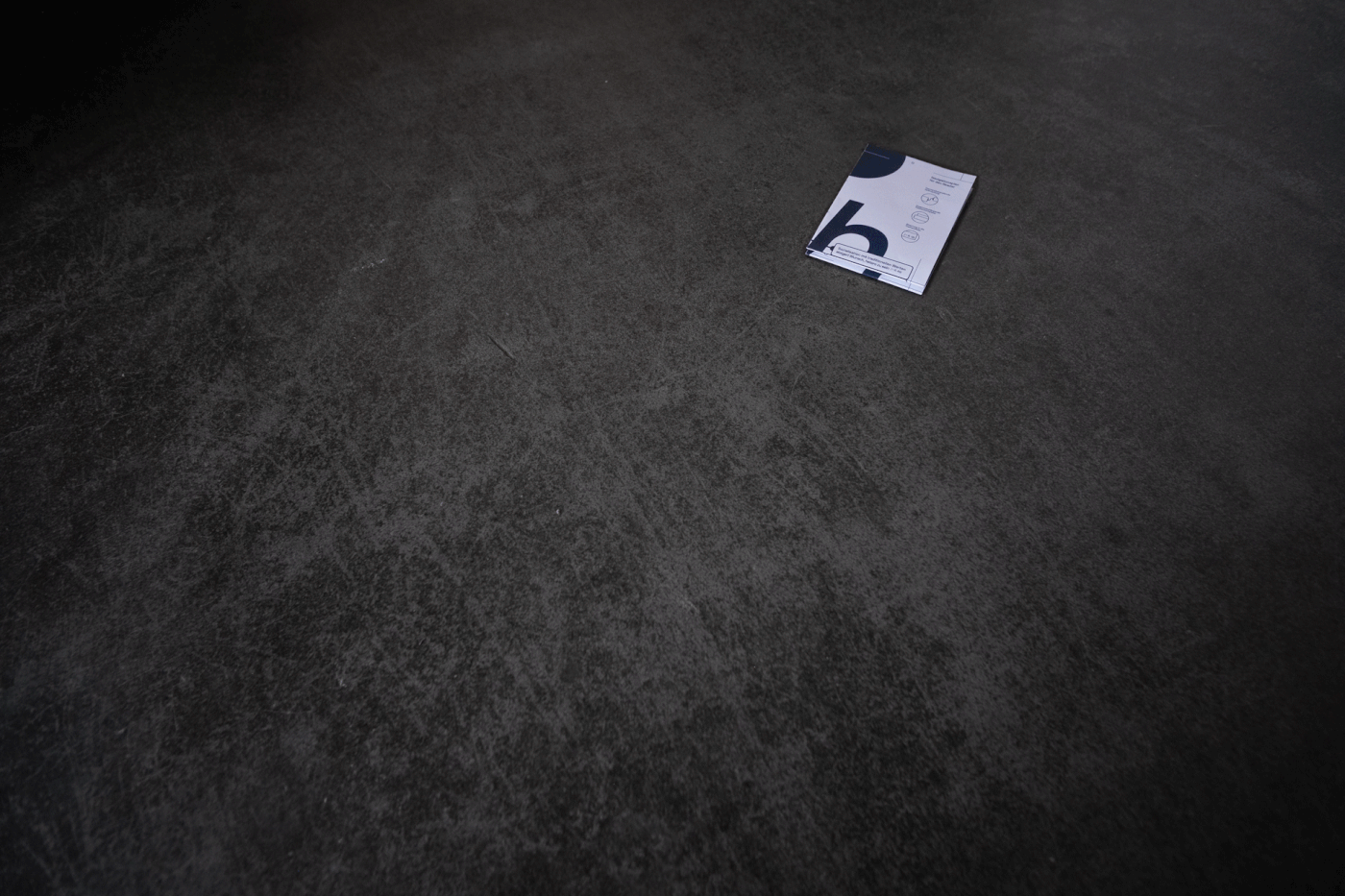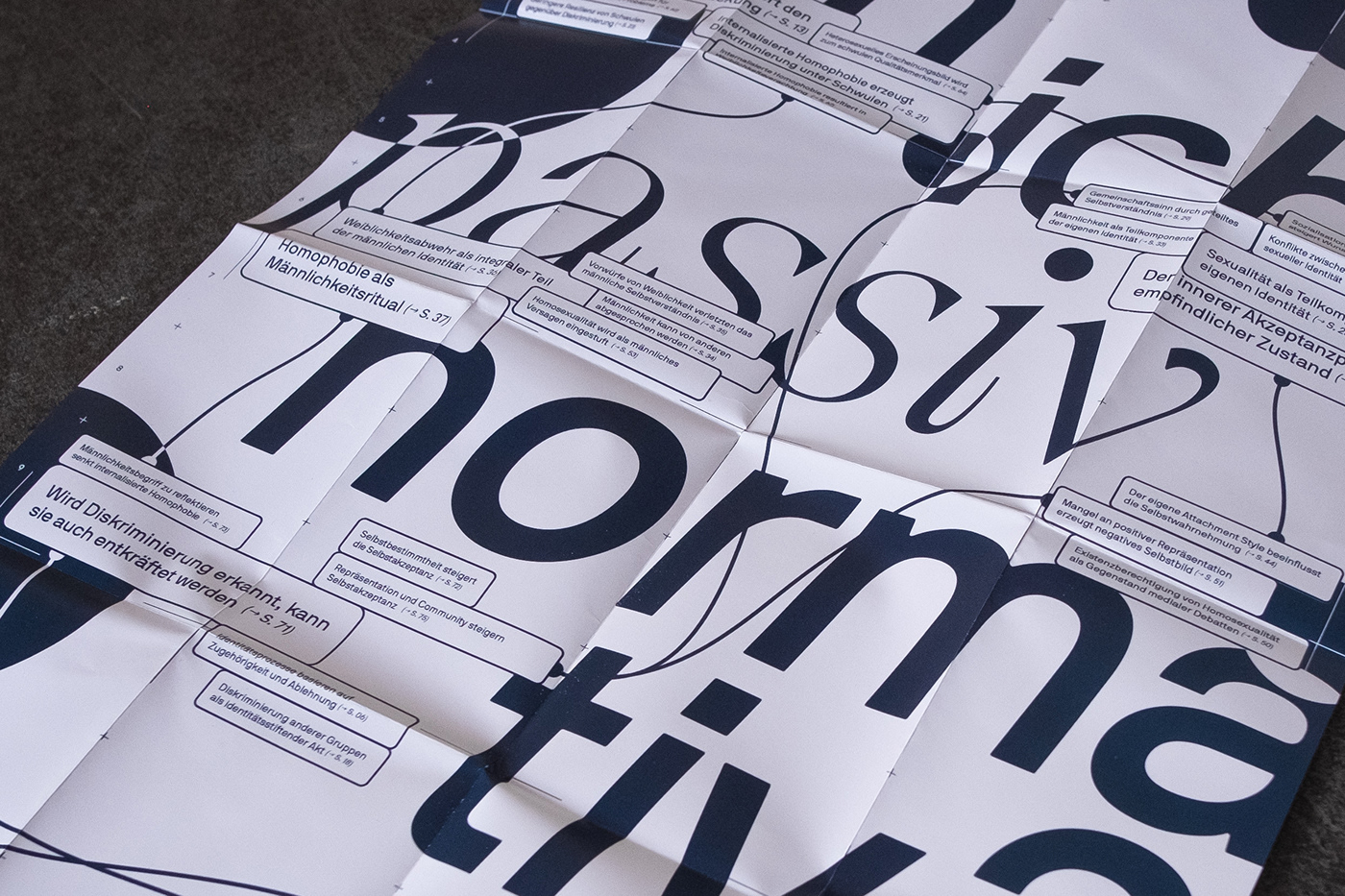
internal affairs — A self reflection on
internalized homophobia.
Structural oppression can not only be seen as a state, but also as a process. Different factors all come together that consolidate structures of social hierarchy. One of them is internalization: Victims of discrimination unconsciously take in messages of inferiority and prejudice that then dictate their own percieved self worth.
Wanting to overcome discrimination also means to understand how discriminiation affects one's own personal actions. This project is based on my own self reflection and a survey held with 100 homosexual men on how they experience being marginalized. It aims towards communicating why gay men sometimes tend to reproduce homophobic behaviour within their community and what messages they might have internalized about gay men.
B.A. Thesis in visual communication

First impressions of binding, material and format.
Community based design approach
When communicating the problems and needs of marginalized communities, a multifaceted and cooperative approach is necessary. A survey with 100 male homosexual respondants was used as a base before starting the project. Concept, focus topics, structure and visual language were heavily influenced by their responses. This approach also lead to several ways to engage with the project: On an emotional, a rational and an empirical / interactive level.



Visualization of an invisible phenomenon
Internalized homophobia is the result of structural discrimination, which is also why it is very hard to understand. In this publication, the interwoven psychological influences of religious homophobia, misrepresentation in media, gender roles and concepts of masculinity are shown. Additionally, the results of the preceding survey visualize the specific manifestations of this phenomenon.


Visualization of 100 reactions to the statement "I often try to appear more masculine".
Navigating overwhelming topics
In order to understand the structural and psychological aspect of oppression, this publication provides a map of all topics contained within. This way, one can easily see how different factors of homophobic discrimination are intertwined. The aim is to understand why heteronormativity and oppression can result in gay men internalizing negative resentments towards femininity, other homosexuals and their own sexual identity.



Provided navigation plan of all included topics within the publication.
The feelling of not being alone
This project stands in a long tradition of queer activists: Gay men and other queer people have always had the unpleasant task of deciding between being authentic and visible or living conforming yet unauthentic lives. The graphic design of this publication suggests that the readers are not alone with their struggles. It looks like it has already been used by at least one person to find answers.



Entering queer spaces
To continue the discussion about internalized homophobia and it's effects on the gay community, the project extends into queer safe spaces (bars, clubs and cafés). A digital version of the preceding survey aims to visualize the actual occurence of internalized homophobia in Germany.


Credits & Acknoledgements
Concept and layout: Adrian Wilhelm
Supervisors: Prof. Alice Chi, Dipl.-Des. Dagmar Korintenberg
Photography: Tim Eckermann
Binding: Manuel Pollanka
Emotional support: Laura Hagenschulte
Typography: NB International Pro, Chiaroscura

